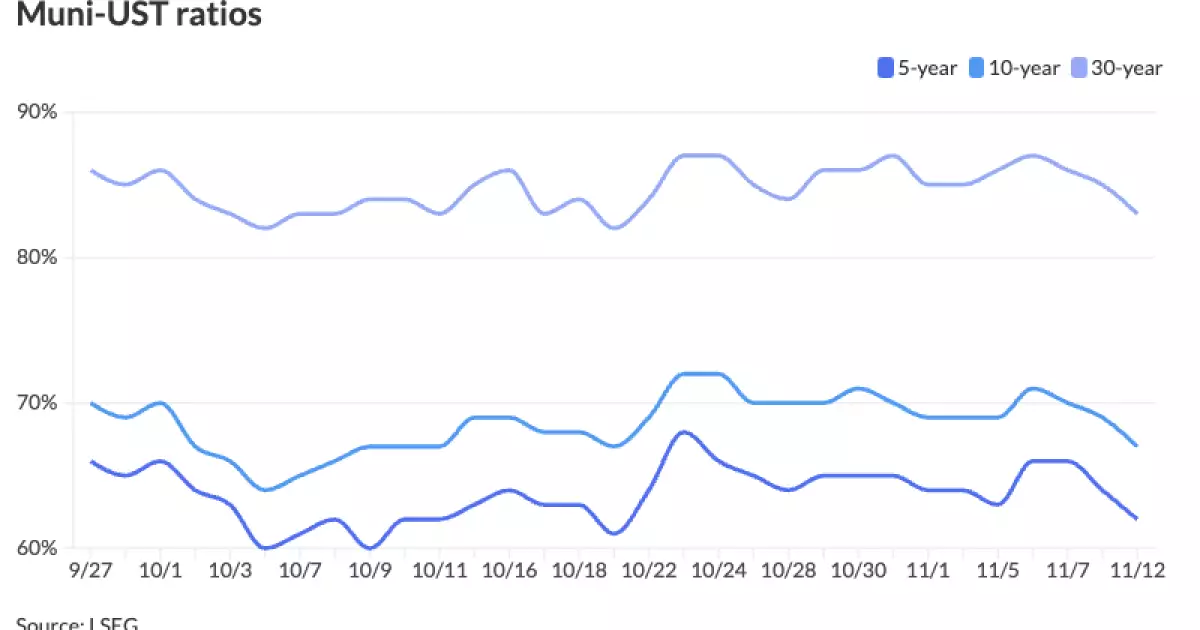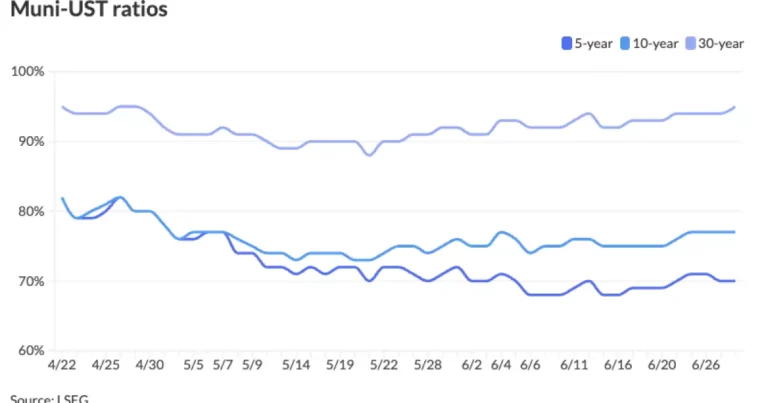Analyzing the Current State of Municipal Bonds in the U.S. Market

The municipal bond market, often viewed as a safe haven for conservative investors, has recently exhibited intriguing behavior in the context of broader economic shifts. Recent sessions showed a mixed bag for municipal securities, as they largely remained immune to the declines affecting the U.S. Treasury market. This article will explore the current dynamics within municipal bonds, looking at yield variations, market performance, and the implications of recent federal monetary policies on investor behavior.
On a typical trading day, the yield curves for triple-A rated municipal bonds—the gold standard in this market—reflected modest changes. Depending on the maturity, one might see a variance of rates moving by one to two basis points. This contrasts significantly with the broader Treasury market, where yields experienced losses of up to 12 basis points on longer maturities, particularly the 10-year Treasury notes. Such divergence in yield movements indicates that municipal bonds are holding their ground, which could be attributed to a couple of factors, including steady demand and potential reinvestment pressures.
For instance, according to data from Refinitiv Municipal Market Data, the two-year municipal-to-Treasury ratio fell to 61%, indicating a slightly less attractive option compared to U.S. Treasuries, whereas longer durations like the 30-year bond illustrated a ratio holding firm at 83%. This relative stability in the municipal sector stands out against the backdrop of a fluctuating Treasury environment, where increased yields might otherwise lure investors away from munis.
Examining performance metrics reveals that municipals have outperformed U.S. Treasuries month-to-date and year-to-date. For instance, the Bloomberg Municipal Index recorded a return of 0.52% in November, while the year-to-date return stood at 1.33%. In stark contrast, Treasury bonds have registered flat returns this month and a modest 1.37% for the year. Additionally, high-yield municipal indices indicate robust performance, returning 0.65% this month and a striking 6.53% year-to-date, highlighting investor confidence in credit quality and potential growth within the municipal space.
Several factors may catalyze this outperformance. An evident driver is the recent dip in yields, which followed a notable spike post-election. The market’s volatility has seemingly subsided after the Federal Reserve implemented a 25 basis point cut in interest rates, inviting buyers back into the fold.
The Federal Reserve’s decisions play a significant role in shaping investor sentiment and market conditions. Senior fixed-income strategists observed that this rate cut, complemented by a rally in the bond market, has reinforced demand for municipal bonds. The evident appetite for these securities has also been underpinned by reinvestment processes, where significant capital was mobilized toward municipal securities after substantial principal and interest payouts earlier in the month.
However, a caveat exists for those looking to invest heavily in municipal bonds as the year winds down. Historical patterns suggest investors may be wary of purchasing mutual funds late in the year due to potential taxable capital gains distributions. This realization leads to a broader strategic reconsideration among investors, potentially influencing fund flows into the upcoming months.
One cannot ignore the potential constraints created by a dip in new supply of municipal bonds. The 30-day visible supply has shrunk, now sitting at $10.56 billion—substantially reduced from earlier months leading up to the election. With only a few full trading weeks remaining in December, and the Thanksgiving holiday looming, one can anticipate fewer opportunities for investors to engage in new bond purchases.
Nonetheless, there remains a pipeline of significant offerings set to come to market. Planned transactions include a $1 billion issuance for gas project revenue bonds and various educational and infrastructure bonds, reflecting continued investment in critical sectors. As the market adjusts to these variable aspects, it will be interesting to see how demand for these bonds holds up amidst changing economic signals.
As investors navigate the complexities of the current financial landscape, the robust performance of municipal bonds positions them as an attractive option for those seeking stability and returns in a volatile market. While the influx of cash into municipal funds is expected to taper off, the overall health of the municipal bond market suggests a resilient sector primed for growth. Investors must remain vigilant and adaptable, ready to seize opportunities that arise in the shifting dynamics of the broader economic environment.





